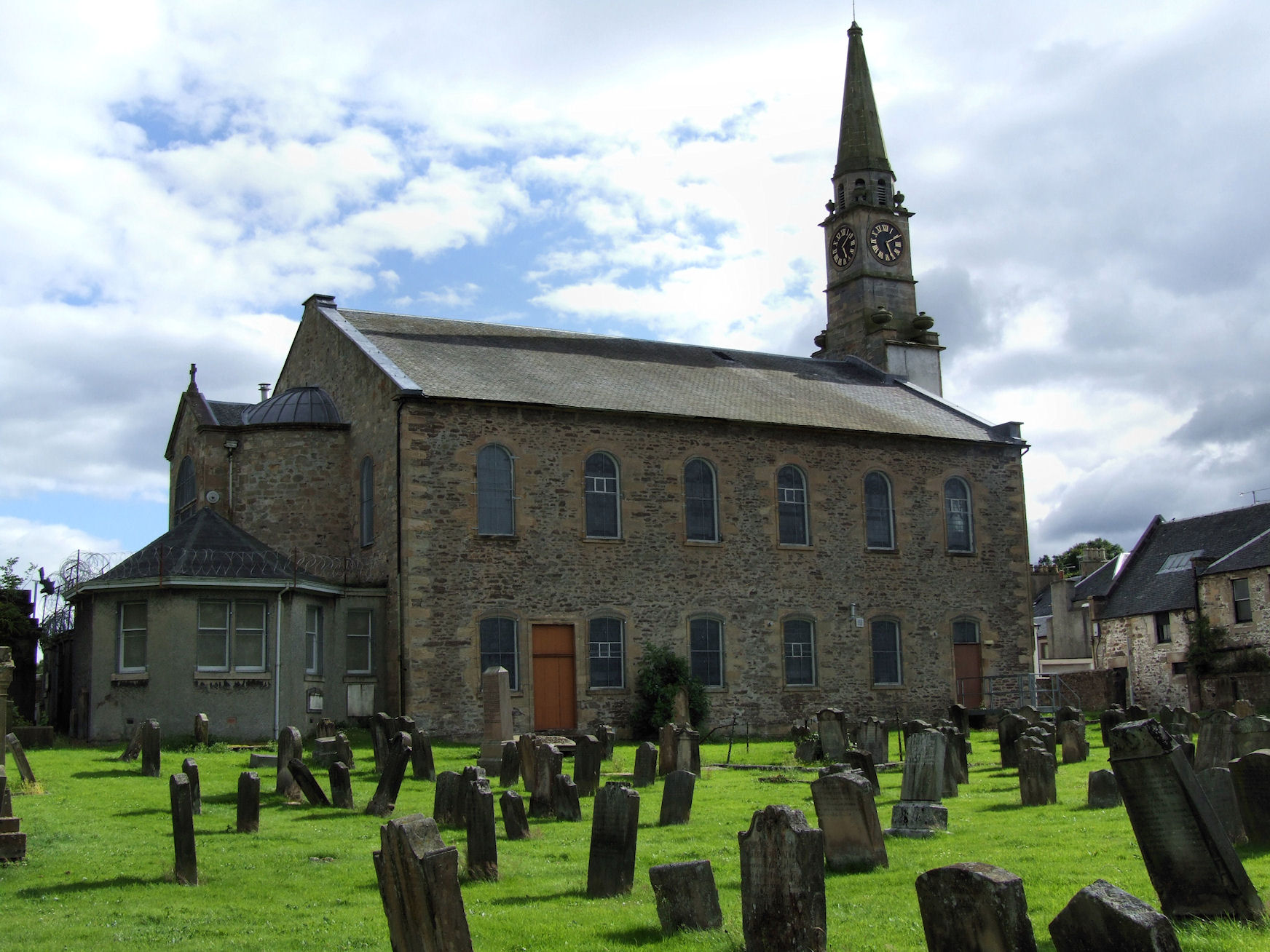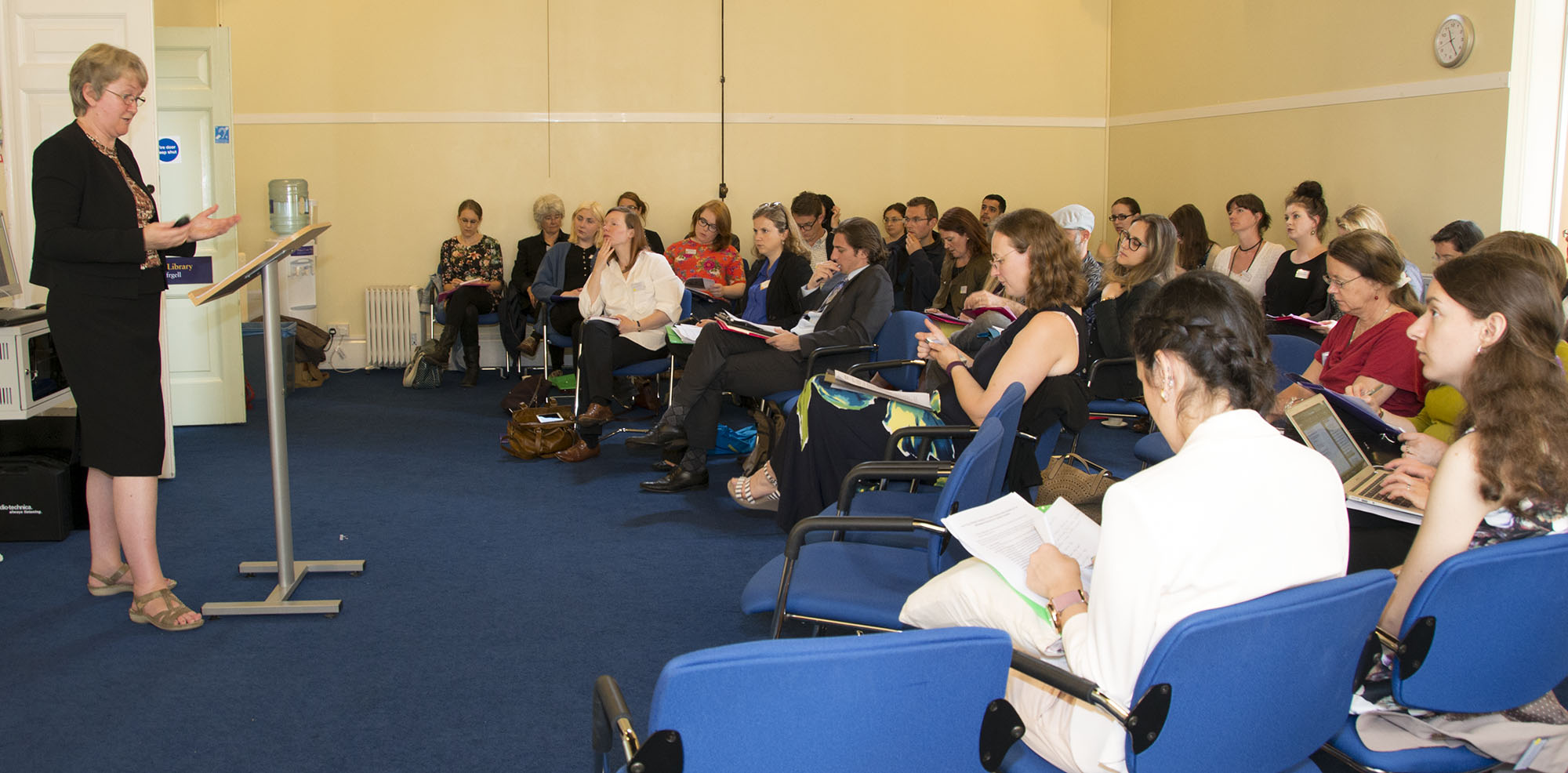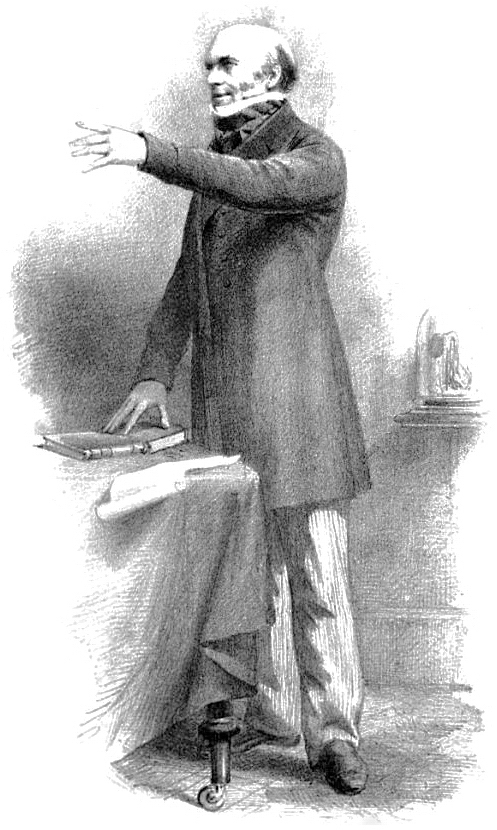|
William Smellie (obstetrician)
William Smellie (5 February 1697 – 5 March 1763) was a Scottish obstetrician and medical instructor who practiced and taught primarily in London. One of the first prominent male midwives in Britain, he designed an improved version of the obstetrical forceps, established safer delivery practices, and through his teaching and writing helped make obstetrics more scientifically based. He is often called the "father of British midwifery". Early life and education Smellie was born on 5 February 1697 in the town of Lesmahagow, Scotland. He was the only child of Sara Kennedy (1657–1727) and Archibald Smellie (1663/4–1735), a merchant and burgess of the town. Smellie practiced medicine before getting a license, opening an apothecary in 1720 in Lanark. It was not a particularly lucrative venture, as he also sold cloth as a side business to supplement his income, but he began reading medical books and teaching himself obstetrics at this time. By 1728, he was married to Eupham Borla ... [...More Info...] [...Related Items...] OR: [Wikipedia] [Google] [Baidu] |
Lesmahagow
Lesmahagow ( ; sco, Lismahagie or ''Lesmahagae'', gd, Lios MoChuda) is a small town in the historic county of Lanarkshire on the edge of moorland, near Lanark in the central belt of Scotland. Lesmahagow was also a civil parish. It lies west of the M74, and southeast of Kirkmuirhill. It is also known as Abbey Green or the Gow. Etymology The name means "Enclosure (meaning a walled area, like a monastery or fort) of St Machutus". The saint was born in Wales and may originally have been known as ''"Mahagw"'' prior to emigrating to Brittany where he became known by the Latinised form of the name and also as "St Malo". It is also possible that the first syllable may mean "garden" rather than "monastery", although Mac an Tailleir (2003) believes the former was altered from the latter in Gaelic. Religion The town has three Christian congregations, namely Lesmahagow Old Parish Church of the Church of Scotland and Abbeygreen Church of the Free Church of Scotland and an Evangel ... [...More Info...] [...Related Items...] OR: [Wikipedia] [Google] [Baidu] |
Charlotte Of Mecklenburg-Strelitz
Charlotte of Mecklenburg-Strelitz (Sophia Charlotte; 19 May 1744 – 17 November 1818) was Queen of Great Britain and of Ireland as the wife of King George III from their marriage on 8 September 1761 until the union of the two kingdoms on 1 January 1801, after which she was Queen of the United Kingdom of Great Britain and Ireland until her death in 1818. As George's wife, she was also Electress of Hanover until becoming Queen of Hanover on 12 October 1814, when the electorate became a kingdom. Charlotte was Britain's longest-serving queen consort. Charlotte was born into the royal family of Mecklenburg-Strelitz, a duchy in northern Germany. In 1760, the young and unmarried George III inherited the British throne. As Charlotte was a minor German princess with no interest in politics, George considered her a suitable consort, and they married in 1761. The marriage lasted 57 years, and produced 15 children, 13 of whom survived to adulthood. They included two fu ... [...More Info...] [...Related Items...] OR: [Wikipedia] [Google] [Baidu] |
Alumni Of The University Of Glasgow
Alumni (singular: alumnus (masculine) or alumna (feminine)) are former students of a school, college, or university who have either attended or graduated in some fashion from the institution. The feminine plural alumnae is sometimes used for groups of women. The word is Latin and means "one who is being (or has been) nourished". The term is not synonymous with "graduate"; one can be an alumnus without graduating ( Burt Reynolds, alumnus but not graduate of Florida State, is an example). The term is sometimes used to refer to a former employee or member of an organization, contributor, or inmate. Etymology The Latin noun ''alumnus'' means "foster son" or "pupil". It is derived from PIE ''*h₂el-'' (grow, nourish), and it is a variant of the Latin verb ''alere'' "to nourish".Merriam-Webster: alumnus .. Separate, but from the ... [...More Info...] [...Related Items...] OR: [Wikipedia] [Google] [Baidu] |
18th-century Scottish Medical Doctors
The 18th century lasted from January 1, 1701 ( MDCCI) to December 31, 1800 ( MDCCC). During the 18th century, elements of Enlightenment thinking culminated in the American, French, and Haitian Revolutions. During the century, slave trading and human trafficking expanded across the shores of the Atlantic, while declining in Russia, China, and Korea. Revolutions began to challenge the legitimacy of monarchical and aristocratic power structures, including the structures and beliefs that supported slavery. The Industrial Revolution began during mid-century, leading to radical changes in human society and the environment. Western historians have occasionally defined the 18th century otherwise for the purposes of their work. For example, the "short" 18th century may be defined as 1715–1789, denoting the period of time between the death of Louis XIV of France and the start of the French Revolution, with an emphasis on directly interconnected events. To historians who expand ... [...More Info...] [...Related Items...] OR: [Wikipedia] [Google] [Baidu] |
1763 Deaths
Events January–March * January 27 – The seat of colonial administration in the Viceroyalty of Brazil is moved from Salvador to Rio de Janeiro. * February 1 – The Royal Colony of North Carolina officially creates Mecklenburg County from the western portion of Anson County. The county is named for Queen Charlotte of Mecklenburg-Strelitz, who married George III of the United Kingdom in 1761. * February 10 – Seven Years' War – French and Indian War: The Treaty of Paris ends the war, and France cedes Canada (New France) to Great Britain. * February 15 – The Treaty of Hubertusburg puts an end to the Seven Years' War between Prussia and Austria, and their allies France and Russia. * February 23 – The Berbice Slave Uprising starts in the former Dutch colony of Berbice. * March 1 – Charles Townshend becomes President of the Board of Trade in the British government. April–June * April 6 – The Théâtre du Palais-Roya ... [...More Info...] [...Related Items...] OR: [Wikipedia] [Google] [Baidu] |
1697 Births
Events January–March * January 8 – Thomas Aikenhead is hanged outside Edinburgh, becoming the last person in Great Britain to be executed for blasphemy. * January 11 – French writer Charles Perrault releases the book ''Histoires ou contes du temps passé'' (literally "Tales of Past Times", known in England as "Mother Goose tales") in Paris, a collection of popular fairy tales, including ''Cinderella'', ''Puss in Boots'', ''Red Riding Hood'', ''The Sleeping Beauty'' and ''Bluebeard''. * February 8 – The English infantry regiment of Arthur Chichester, 3rd Earl of Donegall is disbanded four years after it was first raised. * February 22 – Gerrit de Heere becomes the new Governor of Dutch Ceylon, succeeding Thomas van Rhee and administering the colony for almost six years until his death. * February 26 – Conquistador Martín de Ursúa y Arizmendi and 114 soldiers arrive at Lake Petén Itzá in what is now Guatemala and begin the Spanish conquest of Guatemala with a ... [...More Info...] [...Related Items...] OR: [Wikipedia] [Google] [Baidu] |
Childbirth
Childbirth, also known as labour and delivery, is the ending of pregnancy where one or more babies exits the internal environment of the mother via vaginal delivery or caesarean section. In 2019, there were about 140.11 million births globally. In the developed countries, most deliveries occur in hospitals, while in the developing countries most are home births. The most common childbirth method worldwide is vaginal delivery. It involves four stages of labour: the shortening and opening of the cervix during the first stage, descent and birth of the baby during the second, the delivery of the placenta during the third, and the recovery of the mother and infant during the fourth stage, which is referred to as the postpartum. The first stage is characterized by abdominal cramping or back pain that typically lasts half a minute and occurs every 10 to 30 minutes. Contractions gradually becomes stronger and closer together. Since the pain of childbirth correlates with contractions ... [...More Info...] [...Related Items...] OR: [Wikipedia] [Google] [Baidu] |
A Sett Of Anatomical Tables V00005 00000004
A, or a, is the first letter and the first vowel of the Latin alphabet, used in the modern English alphabet, the alphabets of other western European languages and others worldwide. Its name in English is English alphabet#Letter names, ''a'' (pronounced ), plural English alphabet#Letter names, ''aes''. It is similar in shape to the Greek alphabet#History, Ancient Greek letter alpha, from which it derives. The Letter case, uppercase version consists of the two slanting sides of a triangle, crossed in the middle by a horizontal bar. The lowercase version can be written in two forms: the double-storey a and single-storey ɑ. The latter is commonly used in handwriting and fonts based on it, especially fonts intended to be read by children, and is also found in italic type. In English grammar, "English articles, a", and its variant "English articles#Indefinite article, an", are Article (grammar)#Indefinite article, indefinite articles. History The earliest certain ancestor of ... [...More Info...] [...Related Items...] OR: [Wikipedia] [Google] [Baidu] |
Helen King (classicist)
Helen King (born 1957) is a British classical scholar and advocate for the medical humanities. She is Professor Emerita of Classical Studies at the Open University. She was previously Professor of the History of Classical Medicine and Head of the Department of Classics at the University of Reading. Early life and education King was born in 1957. She completed her first degree at University College London in Ancient History and Social Anthropology. She gained her doctorate at UCL in 1985 for a PhD on menstruation in ancient Greece supervised by Sarah C. Humphreys, Sarah C. (Sally) Humphreys. Her thesis was entitled ''From 'parthenos' to 'gyne': the Dynamics of Category.'' Academic career Having completed her doctorate, King held research fellowships at the universities of Cambridge University Press, Cambridge and Newcastle University, Newcastle, taught at the Liverpool Institute of Higher Education for eight years, and moved to Reading on a Wellcome Trust University Award in 19 ... [...More Info...] [...Related Items...] OR: [Wikipedia] [Google] [Baidu] |
Petrus Camper
Petrus Camper FRS (11 May 1722 – 7 April 1789), was a Dutch physician, anatomist, physiologist, midwife, zoologist, anthropologist, palaeontologist and a naturalist in the Age of Enlightenment. He was one of the first to take an interest in comparative anatomy, palaeontology, and the facial angle. He was among the first to mark out an "anthropology," which he distinguished from natural history. He studied the orangutan, the Javan rhinoceros, and the skull of a mosasaur, which he believed was a whale. Camper was a celebrity in Europe and became a member of the Royal Society (1750), the Göttingen (1779), and Russian Academy of Sciences (1778), the Royal Society of Edinburgh (1783), the French (1786) and the Prussian Academy of Sciences (1788). He designed and constructed tools for his patients, and for surgeries. He was an amateur drawer, a sculptor, a patron of art and a conservative, royalist politician. Camper published some lectures containing an account of his craniome ... [...More Info...] [...Related Items...] OR: [Wikipedia] [Google] [Baidu] |
Burke And Hare Murders
The Burke and Hare murders were a series of sixteen killings committed over a period of about ten months in 1828 in Edinburgh, Scotland. They were undertaken by William Burke and William Hare, who sold the corpses to Robert Knox for dissection at his anatomy lectures. Edinburgh was a leading European centre of anatomical study in the early 19th century, in a time when the demand for cadavers led to a shortfall in legal supply. Scottish law required that corpses used for medical research should only come from those who had died in prison, suicide victims, or from foundlings and orphans. The shortage of corpses led to an increase in body snatching by what were known as "resurrection men". Measures to ensure graves were left undisturbed—such as the use of mortsafes—exacerbated the shortage. When a lodger in Hare's house died, he turned to his friend Burke for advice and they decided to sell the body to Knox. They received what was, for them, the generous sum of £7 10s. A l ... [...More Info...] [...Related Items...] OR: [Wikipedia] [Google] [Baidu] |
William Hunter (anatomist)
William Hunter (23 May 1718 – 30 March 1783) was a Scottish anatomist and physician. He was a leading teacher of anatomy, and the outstanding obstetrician of his day. His guidance and training of his equally famous brother, John Hunter, was also of great importance. Early life and career Hunter was born at Long Calderwood, now a part of East Kilbride, South Lanarkshire, to Agnes Paul (c.1685–1751) and John Hunter (1662/3–1741). He was the elder brother of surgeon, John Hunter. After studying divinity at the University of Glasgow, he went into medicine in 1737, studying under William Cullen. Arriving in London, Hunter became resident pupil to William Smellie (1741–44) and he was trained in anatomy at St George's Hospital, London, specialising in obstetrics. He followed the example of Smellie in giving a private course on dissecting, operative procedures and bandaging, from 1746. His courtly manners and sensible judgement helped him to advance until he became the lead ... [...More Info...] [...Related Items...] OR: [Wikipedia] [Google] [Baidu] |








